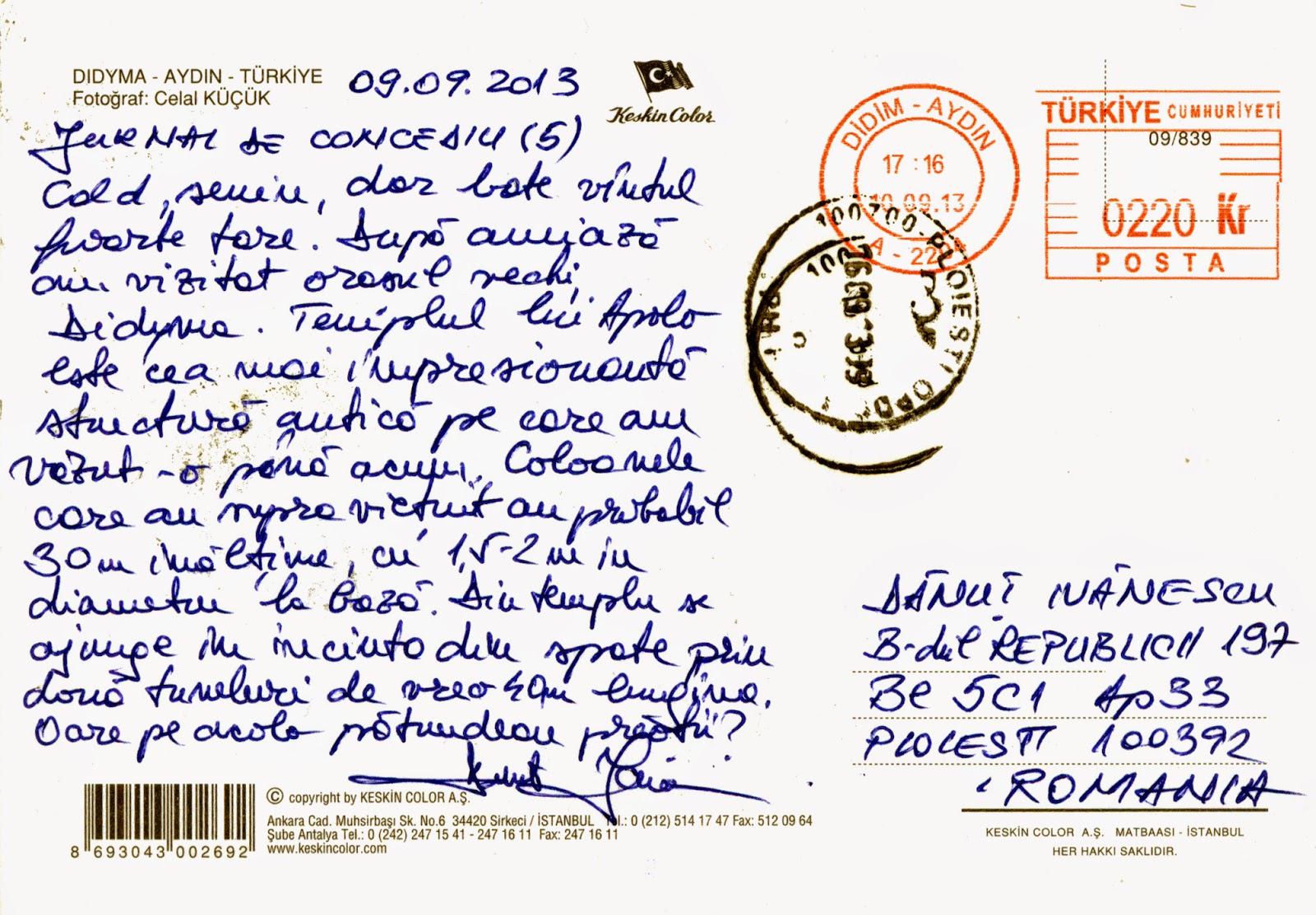 |
| 1046 The ruins of the Temple of Apollo at Didyma |
Didim, a small town and a popular seaside holiday resort on the Aegean coast, on the north shore of the gulf of Güllük, is home of the antique city of Didyma with its Temple of Apollo, the Didymaion. Next to Delphi, Didyma was the most renowned oracle of the Hellenic world, first mentioned in the Homeric Hymn to Apollo, and also the largest and most significant sanctuary on the territory of the great classical city Miletus. To approach it, visitors would follow the Sacred Way to Didyma, about 17 km long.
 |
| Entrance ticket to the Temple of Apollo at Didyma (2013) |
Along the way, were ritual waystations, and statues of members of the Branchidae family, as well as animal figures. Some of these statues, dating to the 6th century BC are now in the British Museum, taken by Charles Newton in the 19th century. The 6th century Didymaion enclosed a smaller predecessor, its treasury being enriched by gifts from Croesus. Until its destruction by the Persians in 494 BC, the sanctuary was administered by the family of the Branchidae. The priestess, seated above the sacred spring, gave utterances that were interpreted by the Branchidae.
The Persians carried away to Ecbatana the bronze statue of Apollo, traditionally made by Canachus of Sicyon. Though the sanctuaries of Delphi and Ephesus were swiftly rebuilt, Didyma remained a ruin until 334 BC. After the capture of Miletus, Alexander the Great reconsecrated the oracle, but placed its administration in the hands of the city, where the priest in charge was annually elected. About 300 BC, Seleucus I Nicator brought the bronze cult image back, and the Milesians began to build a new temple, which, if it had ever been completed, would have been the largest in the Hellenic world.
It was never finished, though its oracle and priests were hard at work until, after 1400 years of soothsaying, Christianity became the state religion of the Byzantines and brought an end to pagan practices. The temple we see today is an Ionic structure measuring 60 x 118m, with a dipteral arrangement of two rows of columns with 21 on each side and 10 at each end. The columns are of various styles with pedestals adorned with reliefs. These columns support an architrave surmounted by a frieze decorated with acanthus leaves and Gorgon (Medusa) heads.
The high pronaos at the top of a monumental flight of steps leads into a naos with two columns, which gives access to the sacred area or cella in the form of an open courtyard surrounded by high walls with columns and containing a small Ionic temple which housed the statue of the god. Didyma was never a large city and its fame was closely connected with the existence of a sacred spring and the temple founded over it. The ancient Greeks merely took over the already existing sanctuary and reorganised it.
References
Didyma - Wikipedia
Didyma (Didim) - Тurizm.net
Sender: Dănuţ Ivănescu
Sent from Didim (Aegean Region / Turkey), on 10.09.2013
Photo: Celal Küçük

No comments:
Post a Comment